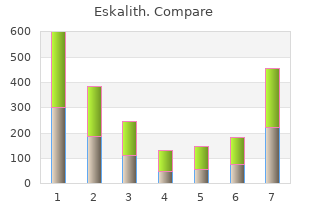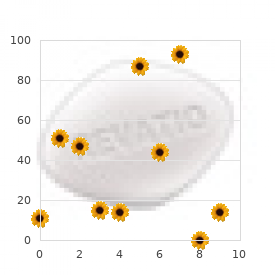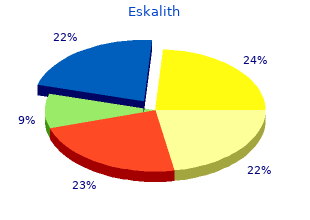Eskalith
"Purchase eskalith cheap online, 5 medications related to the lymphatic system."
By: William Seaman, MD
- Professor, Medicine, University of California, San Francisco, San Francisco, CA

https://profiles.ucsf.edu/william.seaman
The nature of this diagnostic method cheap eskalith 300mg online, coupled with a lack of 167 Rosenberg Charles E order eskalith with a mastercard. This catch-all nature is one thing Dalton herself perpetuated when she mentioned �[p]remenstrual syndrome covers an infinite variety of symptoms but the analysis can never be made solely on the premise of symptoms order eskalith 300mg with mastercard. This is so partially as a result of cause and effect turn out to be wrapped under the same package deal purchase eskalith 300mg on line. It is essential to emphasize that all of those issues uncovered by Jane Ussher have a adverse impression of girls�s lives. The strategies and the body part studied could change however what is significant is that the pursuit continues. As this thesis has proven, such pursuits, and the classes they generate, have real consequences for a way we perceive and act upon ourselves. One crucial concern relating to how illnesses are outlined and their etiologies determined rests of their potential to �function tools of social control, as labels for deviance, and as a rationale for the legitimization of standing relationships. Avoid use in sufferers with substantial alcohol use or � Increased risk of suicidal considering and conduct in youngsters, proof of persistent liver disease (5. Concomitant use of antiplatelet medicine and anticoagulants Dosage and Administration (2. Advise families and caregivers of the necessity for close remark and communication with the prescriber [see Warnings and Precautions (5. Periodically reassess to determine the necessity for upkeep remedy and the appropriate dosage for such remedy. Nevertheless, if a decision is made to increase the dosage past 60 mg as soon as every day, increase dosage in increments of 30 mg as soon as every day. Periodically reassess to determine the continued want for upkeep remedy and the appropriate dosage for such remedy. If a decision is made to increase the dose past 60 mg as soon as every day, increase dose in increments of 30 mg as soon as every day. If a decision is made to increase the dose past 60 mg as soon as every day, increase dosage in increments of 30 mg as soon as every day. For sufferers for whom tolerability is a concern, a decrease starting dose may be thought of. Since diabetes is incessantly difficult by renal disease, consider a decrease starting dosage and gradual increase in dosage for sufferers with renal impairment [see Dosage and Administration (2. The dosage may be elevated to 60 mg as soon as every day based on response and tolerability. A gradual reduction in dosage rather than abrupt cessation is really helpful every time potential [see Warnings and Precautions (5. In a patient who requires extra pressing remedy of a psychiatric condition, different interventions, including hospitalization, should be thought of [see Contraindications (four)]. The patient should be monitored for symptoms of serotonin syndrome for five days or until 24 hours after the last dose of linezolid or intravenous methylene blue, whichever comes first. The clinician ought to, however, concentrate on the potential for emergent symptoms of serotonin syndrome with such use [see Warnings and Precautions (5. Suicide is a identified risk of despair and sure different psychiatric disorders, and these disorders themselves are the strongest predictors of suicide. There has been an extended-standing concern, nevertheless, that antidepressants could have a task in inducing worsening of despair and the emergence of suicidality in sure sufferers in the course of the early phases of remedy. There was appreciable variation in risk of suicidality among medicine, however a tendency toward an increase in the youthful sufferers for almost all medicine studied. The risk of variations (drug vs placebo), nevertheless, were comparatively steady inside age strata and across indications. These risk variations (drug-placebo difference in the number of instances of suicidality per one thousand sufferers treated) are supplied in Table 1. All sufferers being treated with antidepressants for any indication should be monitored appropriately and observed intently for medical worsening, suicidality, and unusual modifications in conduct, especially in the course of the initial few months of a course of drug remedy, or at instances of dose modifications, either will increase or decreases. The following symptoms, anxiety, agitation, panic attacks, insomnia, irritability, hostility, aggressiveness, impulsivity, akathisia (psychomotor restlessness), hypomania, and mania, have been reported in grownup and pediatric sufferers being treated with antidepressants for main depressive disorder in addition to for different indications, both psychiatric and nonpsychiatric. If the choice has been made to discontinue remedy, treatment should be tapered, as rapidly as is feasible, however with recognition that discontinuation may be associated with sure symptoms [see Dosage and Administration (2. Families and caregivers of sufferers being treated with antidepressants for main depressive disorder or different indications, both psychiatric and nonpsychiatric, should be alerted about the need to monitor sufferers for the emergence of agitation, irritability, uncommon modifications in conduct, and the other symptoms described above, in addition to the emergence of suicidality, and to report such symptoms immediately to health care providers. Screening Patients for Bipolar Disorder A main depressive episode could be the initial presentation of bipolar disorder. It is generally believed (although not established in managed trials) that treating such an episode with an antidepressant alone could increase the probability of precipitation of a blended/manic episode in sufferers in danger for bipolar disorder. Whether any of the symptoms described above symbolize such a conversion is unknown. Cases of cholestatic jaundice with minimal elevation of transaminase ranges have also been reported. Other postmarketing reviews point out that elevated transaminases, bilirubin, and alkaline phosphatase have occurred in sufferers with persistent liver disease or cirrhosis. In most sufferers, the median time to detection of the transaminase elevation was about two months. Risk of falling also appeared to be proportional to a patient�s underlying risk for falls and appeared to increase steadily with age. As geriatric sufferers are likely to have a higher underlying risk for falls as a result of a higher prevalence of risk factors such as use of multiple medications, medical comorbidities and gait disturbances, the impression of increasing age by itself is unclear.
Social assist is critical for serving to the person cope after a trauma has occurred discount 300 mg eskalith mastercard. It may be essential to cheap 300mg eskalith free shipping establish potential sources of assist and facilitate assist from others cheap eskalith 300 mg with mastercard. Survivors can be taught a range of social skills to generic 300 mg eskalith with visa facilitate social participation and assist-seeking. Immediately after trauma exposure, protect an interpersonal safety zone protecting fundamental personal area. As part of Psychological First Aid, reconnect trauma survivors with previously supportive relationships. Facilitate entry to social assist and provide assistance in bettering social functioning, as indicated. Assessment of the response to the acute intervention should embrace an evaluation for the next danger factors: a. Follow-up after acute intervention to determine patient standing should embrace the next: a. Patient recovers from acute symptoms � provide schooling about acute stress reaction and contact information with directions for obtainable observe-up if wanted. Persons with stress reactions might respond with maladaptive coping types or well being danger behaviors; so, an evaluation of coping types and well being danger behaviors is warranted. Those sufferers who respond well to acute interventions can then be offered contact information for observe-up should they later become symptomatic. In truth, referral, and subsequent delivery of more intensive interventions, will rely upon sufficient implementation of screening. But even if those that would possibly benefit from psychological well being companies are adequately recognized, factors corresponding to embarrassment, fear of stigmatization, practical limitations. Those making referrals can instantly discuss these attitudes about seeking assist and try and preempt avoidance of wanted companies. Primary Care provider should contemplate initiating therapy pending referral or if the patient is reluctant or unable to acquire specialty companies. Primary Care provider should continue evaluating and treating co-morbid physical diseases and addressing some other well being issues, as well as educating and validating the patient regarding his/her illness. Because people get well from traumatic stress-associated problems at different rates, some individuals might require more time or an adjustment of the remedy prior to enchancment. For example, early in remedy, drugs may be adjusted to goal distinguished symptoms. Clear indications for a psychological well being referral embrace: a worsening of stress-associated symptoms, new onset of dangerousness or maladaptive coping to stress, exacerbation of co-morbid psychiatric situations, or deterioration in operate. This referral must be made in session with the patient, and with consideration of the patient�s severity of problems and preferences. Several remedy modalities can be initiated and monitored within the main care setting. Therefore, the Primary Care practitioner should contemplate initiating therapy pending referral. However, if the patient is reluctant or unable to acquire specialty companies (see Module B), the Primary Care provider should continue evaluating and treating co-morbid somatic diseases and addressing some other well being issues, as well as educating and validating the patient regarding his/her illness. Follow-up must be offered to individuals who request it or to these at excessive danger of developing adjustment difficulties following exposure to major incidents and disasters, together with individuals who: a. Have acute stress dysfunction or different clinically important symptoms stemming from the trauma b. Were uncovered to a serious incident or disaster that was significantly intense and of lengthy duration. Primary Care providers should observe-up with sufferers about issues associated to trauma in an ongoing method. This may be as a result of a lack of knowledge of the supply of such companies, low perceived need for them, insecurity in their utility or unfavorable attitudes toward psychological healthcare. Therefore, these planning observe-up and outreach companies for survivors should contemplate tips on how to attain trauma survivors to educate them about sources of assist and market their companies to the intended recipients (Excerpted from Raphael, 2000). Each contact with the system of formal and casual companies obtainable to survivors affords a possibility to display for danger and impairment and intervene appropriately. For survivors injured or made unwell in the course of the traumatic occasion, observe-up medical appointments symbolize alternatives for reassessment, referral, and remedy. Patients are most likely to current to main care with unexplained somatic and/or psychological symptoms. The notion of warfare traumatization has been extended to different events, corresponding to catastrophes, physical attacks, rapes, child and wife battering, and sexual abuse. Further, people experiencing prolonged intervals of misery might equally develop a submit traumatic syndrome without any one particular occasion having occurred to surpass their defenses. Consider use of a validated, self-administered guidelines to guarantee systematic, standardized, and efficient review of the patient�s symptoms and historical past of trauma exposure. If trauma exposure is recent (<1 month), particular attention must be given to the next: a. This background is necessary to set up an applicable remedy plan particular to the person patient. Or, if the person has a historical past of childhood abuse and has learned to use dissociation to protect the self, remedy will need to give attention to serving to the trauma victim manage his or her tendency to dissociate under stress.
Buy cheap eskalith on-line. Try These 3 Foods for Erectile Dysfunction And Stay Long In Bed 100%.

Cross References Hypergraphia; Utilization behaviour Automatism Automatisms are advanced motor actions occurring in advanced motor seizures 300mg eskalith with mastercard, which resemble natural actions however occur in an inappropriate set ting discount eskalith 300mg fast delivery. These might occur during a state of impaired consciousness during or shortly after an epileptic seizure buy 300 mg eskalith overnight delivery. Automatisms occur in about one-third of sufferers with advanced partial seizures best eskalith 300 mg, most commonly those of temporal or frontal lobe origin. Automatisms might take various types: � Oro-facial actions: for example, lip smacking, chewing and swallowing actions, saliva tion (particularly temporal lobe origin). Cross References Absence; Aura; Pelvic thrusting; Poriomania; Seizure Autophony the notion of the reverberation of ones own voice, which happens with exterior or center, however not internal, ear disease. Autoscopy Autoscopy (actually �seeing oneself�) is a visual hallucination of ones own face, sometimes with higher body or complete body, likened to seeing oneself in a mirror (therefore mirror hallucination). Autoscopy may be related to parieto-occipital house-occupying lesions, epilepsy, and migraine. Cross References Hallucination; Heautoscopy Autotopagnosia Autotopagnosia, or somatotopagnosia, is a rare dysfunction of body schema charac terized by inability to determine components of the body, both to verbal command or by imitation; that is sometimes localized however at worst involves all components of the body. This may be a type of class-speci c anomia with maximum dif culty for naming body components or one characteristic of anosognosia. Finger agnosia and proper�left disorientation are partial forms of autotopagnosia, all of which are most frequently seen following cerebrovascular events involving the left parietal area. Autotopagnosia: prevalence in a patient without nominal aphasia and with an intact capability to level to components of animals and objects. Cross References Agnosia; Anosognosia; Finger agnosia; Gerstmann syndrome; Right�left disori entation; Somatoparaphrenia fifty four B Babinski�s Sign (1) Babinski�s sign is a polysynaptic cutaneous re ex consisting of an extensor movement (dorsi exion) of the big toe on eliciting the plantar response, as a result of contraction of extensor hallucis longus. There may be as well as fanning (abduction) of the other toes (fan sign; signe de l�eventail) however that is neither essential nor suf cient for Babinski�s sign to be judged present. There may be simultaneous contraction of different limb exor muscle tissue, consistent with the notion that Babinski�s sign types a part of a exion synergy (withdrawal) of the leg. The use of the term �adverse Babinski sign� to point out the conventional nding of a down going (exor; plantar exion) big toe is incorrect, � exor plantar response� being the appropriate description. The plantar response is most commonly carried out by stroking the sole of the foot, though many different variants are described. Babinski�s sign is a normal nding in infants with immature (unmyelinated) corticospinal tracts; persistence beyond 3 years of age, or re-emergence in adult life, is pathological. In this context, Babinski�s sign is considered a reliable (�hard�) sign of corticospinal (pyramidal) tract dysfunction (higher motor neurone pathol ogy) and may coexist with different signs of higher motor neurone dysfunction. However, if weak spot of extensor hallucis longus is among the features of higher motor neurone dysfunction, or from some other trigger, Babinski�s sign may be unexpectedly absent though anticipated on scientific grounds. In the presence of extrapyramidal signs, you will need to distinguish Babinski�s sign, a �pyramidal sign�, from a striatal toe (spontaneous up going plantar). This remark indicated to Babinski the periph eral (facial nerve) origin of hemifacial spasm. It might assist in differentiating hemifacial spasm from different craniofacial movement disorders. Cross Reference Hemifacial spasm Babinski�s Trunk�Thigh Test Babinski�s trunk�thigh check, also known as the �rising sign�, is usually recommended to be of use in distinguishing natural from useful paraplegia and hemiplegia (the abductor sign can also be of use in the former case, Hoover�s sign in the latter). The recumbent patient is requested to sit up with the arms folded on the entrance of the chest. In useful paraplegic weak spot neither leg is raised, and in useful hemiplegia solely the conventional leg is raised. This sample of facial sensory impairment can also be known as onion peel or onion pores and skin. Cross Reference Onion peel, Onion pores and skin Balint�s Syndrome Balint�s syndrome, rst described by a Hungarian neurologist in 1909, consists of: � Simultanagnosia (q. Not all elements may be present; there can also be coexisting visual eld defects, hemispatial neglect, visual agnosia, or prosopagnosia. Balint�s syndrome outcomes from bilateral lesions of the parieto-occipital junc tion causing a useful disconnection between higher-order visual cortical areas and the frontal eye elds, with sparing of the first visual cortex. Balint syndrome has also been reported as a migrainous phenomenon, following traumatic mind harm and in association with Alzheimer�s disease, mind tumour (butter y glioma), radiation necrosis, progressive multifocal leucoencephalopa thy, Marchiafava�Bignami disease with pathology affecting the corpus callosum, and X-linked adrenoleucodystrophy. Cross References Apraxia; Blinking; Ocular apraxia; Optic ataxia; Simultanagnosia Ballism, Ballismus Ballism or ballismus is a hyperkinetic involuntary movement dysfunction char acterized by wild, inging, throwing actions of a limb. These actions most normally involve one-half of the body (hemiballismus), though they may sometimes involve a single extremity (monoballismus) or both halves of the body (paraballismus). Clinical and pathophysiological studies suggest that ballism is a extreme type of chorea. It is most commonly related to lesions of the contralateral subthalamic nucleus. Beevor�s Sign Beevor�s sign is an upward movement of the umbilicus in a supine patient making an attempt both to ex the top onto the chest towards resistance. It signifies a lesion causing rectus abdominis muscle weak spot under the umbilicus. Lower cutaneous abdominal re exes are also absent, having the same localizing value. Downward movement of the umbilicus (�inverted Beevor�s sign�) as a result of weak spot of the higher a part of rectus abdominis is less typically seen. Beevor�s sign in facioscapuloperoneal muscular dystrophy: an outdated sign with new implications. Cross Reference Abdominal re exes Belle Indifference La belle indifference refers to a patient�s seeming lack of concern in the presence of great signs. This was rst de ned in the context of �hysteria�, along with exaggerated emotional reactions, what may now be termed useful or somatoform illness. Some sufferers� coping fashion is to make gentle of great signs; they could be labelled stoical.


Cyanosis is non-speci c as a late feature purchase eskalith online, but cyanosis early suggests a primarily apnoeic mechanism purchase eskalith with visa, similar to occurs in cyanotic breath-holding episodes or gastro-oesophageal re ux purchase eskalith no prescription. Headache could also be associated with epilepsy order eskalith 300mg online, sometimes making it hard to distinguish migraine. The typical state of affairs��I actually have to call his title ve times� before a baby absorbed in his own ideas (or laptop game) responds�is distinguishable from a spell that actively interrupts a baby mid-conversation or mid-mouthful. Assessment Identifying a context during which occasions happen may be very helpful in the recog nition of a variety of non-epileptic childhood paroxysmal occasions, lots of which are benign normal variants. Even in specialist centres false optimistic diagnosis charges have been estimated at 10�15%. The diagnosis then is recurrent acute symptomatic seizures (of a cause to be identi ed), not epilepsy. Adopt a four-level method to the diagnosis of epilepsy: � Disease (is that this epilepsy A tonic seizure resulting in rigidity could cause a baby to fall �like a felled tree�. They would typically be longer (30s or more) and less frequent than absences and with more marked confusion or agitation. These embody walking forwards and backwards, running, leaping, hopping, timed stand on one leg, tandem walking, Fog testing (walking on heels, outer and internal edges of ft, see b p. A non-speci c uncommon gait is sometimes seen in children with a signi cant learning incapacity, but without a speci c diagnosis. Head shape is set by forces from inside and outdoors the skull, and by the timing of closure of cranial sutures (Figure 3. Extracranial forces affecting head shape � Constriction because of multiple being pregnant or bicornuate uterus. More frequent causes of enormous fontanelle/delayed closure � Intrauterine progress retardation. If raised intracranial strain present consider hydrocephalus because of � Post-intraventricular haemorrhage. Pain from posterior fossa structures is referred to the back of head and neck along with the forehead. Pain referred to the pinnacle can come up from: � Intracranial or extracranial arteries, massive intracranial veins or venous sinuses. Clinical evaluation Attempt to characterize the complications as one of: � Isolated acute. Pointers to raised intracranial strain headache � Aggravated by activities that elevate intracranial strain The presence of venous pulsation implies normal intracranial strain but this is absent in 10% normal inhabitants. Asymmetry or elimination by compression of the ipsilateral carotid artery suggests an natural basis. Pragmatic criteria for a diagnosis of migraine are episodes characterized by at least three of the next: � Hemicranial ache. Distinction between muscular contraction headache and migraine with out aura is usually dif cult and it is very important acknowledge that a mixed migraine/ tension headache is quite common. The course of could also be complicated and perpetuated by inappropriate and extreme analgesia use (see b p. Worrying symptoms suggestive of raised intracranial strain embody: � A continual progressive image worsening over days to weeks with or with out vomiting. Typically, a high frequency loss selectively affecting discrimination of consonants and intelligibility of speech. By de nition Landau-Kleffner syndrome consists of concurrent seizures, although these can lag the onset of the auditory agnosia by a few weeks. S2�four perform (perianal sensation, anocutaneous re ex) will be absent in conus lesions. Safe bladder � <20 mL residue after voiding, normal higher tract, normal renal perform, no strain transmission. Unsafe bladder Large bladder residue after voiding, outlet obstruction, high strain, hydronephrosis. Terminology may be complicated � Dyskinesia: any type of extreme irregular motion. Includes tics, stereotypies, akathisia, myoclonus, tremor, chorea, dystonia, athetosis � Hypokinesia: any type of abnormally reduced motion. Includes bradykinesia (slowed motion) and the Parkinsonism triad of bradykinesia, rigidity, and tremor. Mirror actions � Involuntary actions of 1 facet of the physique that mirror intentional actions on the opposite facet of the physique. Dystonia and athetosis � Due to irregular muscle contraction attributable to sustained and simultaneous contraction of agonist and antagonist muscle pairs � Frequently causes twisting and repetitive actions or irregular postures. Athetotic actions are complex, irregular, purposeless, �wriggling�, and have a tendency to predominate over dystonia. If a focal dystonia is persistent, then different diagnoses similar to tics should be thought of. Focal dystonias that may happen in children embody: � blepharospasm; � orofacial dystonia (mixture with blepharospasm generally known as Miege syndrome); � author�s cramp; � spasmodic torticollis. They could also be spontaneous or re exive, triggered by stimuli, similar to noise and touch. This can both re ect a genetic (programming) error of mind development, or disruption by exterior injury or different noxious in uences in what was an otherwise usually developing mind.
